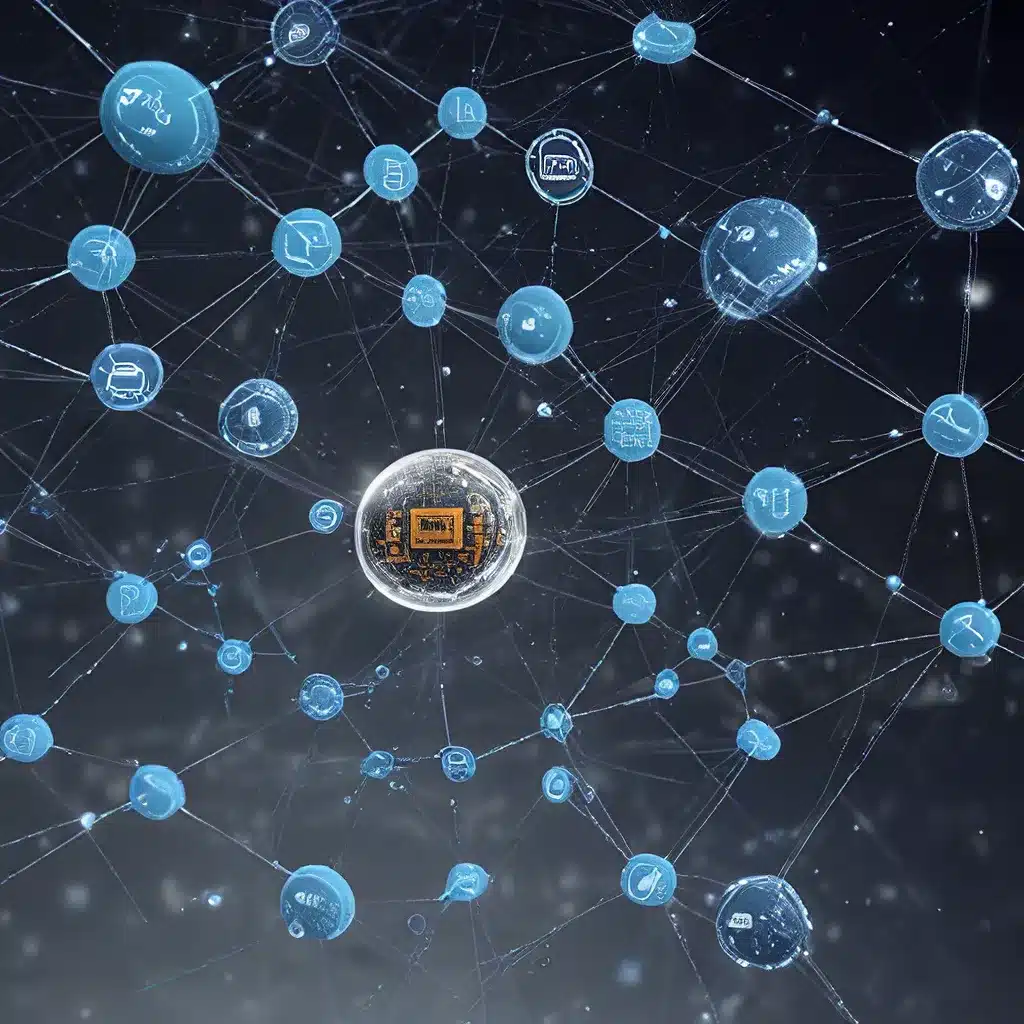
Sensor Networks and the Evolution of IoT
The continuous advancement of sensor technologies has been a driving force behind the rapid growth and diversification of the Internet of Things (IoT) ecosystem. Sensor networks, which comprise interconnected smart sensors capable of gathering, processing, and communicating data, have become the backbone of IoT applications across a wide range of industries, from healthcare and smart cities to industrial automation and environmental monitoring.
As the IoT landscape continues to evolve, the capabilities of sensor networks are also undergoing a transformative evolution. Emerging sensor technologies, such as miniaturized and energy-efficient designs, wireless connectivity, and advanced data processing, are enabling the development of more intelligent, adaptable, and integrated IoT systems. These advancements are paving the way for the next generation of IoT ecosystems, where sensor-driven insights and automated decision-making can profoundly impact various aspects of our lives.
Unlocking the Potential of Sensor Networks
One of the key drivers behind the rise of sensor networks in IoT is their ability to collect vast amounts of real-time data from diverse sources. Sensors can be deployed in a wide range of environments, from wearable devices and smart home systems to industrial machinery and environmental monitoring stations, providing a constant stream of information about the physical world.
However, the true value of sensor networks lies not just in data collection, but in the intelligent processing and analysis of this data. Advanced analytics, machine learning, and artificial intelligence algorithms are being increasingly integrated into sensor network architectures, allowing for automated decision-making, predictive maintenance, and personalized user experiences.
For example, in the healthcare sector, sensor-equipped wearable devices can continuously monitor an individual’s vital signs, activity levels, and sleep patterns, and use machine learning models to detect early signs of illness or condition deterioration. This information can then be used to proactively suggest lifestyle changes or notify healthcare providers, enabling preventive and personalized care.
Similarly, in industrial and infrastructure settings, sensor networks can monitor the performance and condition of critical equipment, predict potential failures, and optimize maintenance scheduling, leading to improved operational efficiency, reduced downtime, and cost savings.
Addressing the Challenges of Sensor Network Design
As sensor networks become more sophisticated and integrated into our daily lives, they also face a number of challenges that must be addressed to ensure their reliability, security, and scalability.
Power management is a crucial consideration in sensor network design, as many sensor nodes are battery-powered or energy-harvesting devices. Developing energy-efficient hardware and power-aware software algorithms is essential to extend the lifetime of sensor networks and minimize the need for manual maintenance.
Data security and privacy are also paramount concerns, as sensor networks often collect and transmit sensitive or personal information. Implementing robust encryption, authentication, and access control mechanisms, as well as privacy-preserving data processing techniques, is crucial to safeguard the integrity and confidentiality of sensor network data.
Additionally, as the number of connected devices in IoT ecosystems continues to grow, the scalability and interoperability of sensor networks become increasingly important. Standardized communication protocols, modular hardware designs, and open-source software platforms can help ensure that sensor networks can seamlessly integrate with other IoT components and scale to meet the demands of large-scale deployments.
Advancing Sensor Capabilities for the Future of IoT
The ongoing advancements in sensor technologies and the integration of intelligent processing capabilities are transforming the way we design, deploy, and leverage sensor networks in IoT applications. As the IoT landscape continues to evolve, the ability of sensor networks to collect, analyze, and act on real-time data will become increasingly crucial in shaping the future of smart cities, connected healthcare, sustainable energy systems, and beyond.
By addressing the challenges of power management, data security, and scalability, and by incorporating innovative sensor capabilities, researchers and industry leaders are paving the way for a new era of intelligent, adaptive, and resilient IoT ecosystems that can profoundly impact our lives and the world around us.
Conclusion
The evolution of sensor networks has been a driving force behind the rapid growth and diversification of the IoT ecosystem. Emerging sensor technologies, such as miniaturized, energy-efficient, and wireless designs, coupled with advanced data processing capabilities, are enabling the development of more intelligent, adaptable, and integrated IoT systems.
As sensor networks continue to evolve, they face challenges in power management, data security, and scalability, which must be addressed to ensure their reliability, security, and scalability. By addressing these challenges and advancing sensor capabilities, researchers and industry leaders are shaping the future of IoT ecosystems, with the potential to profoundly impact various aspects of our lives, from smart cities to connected healthcare and sustainable energy systems.